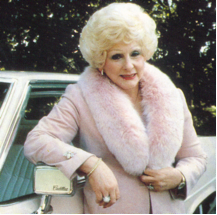
God didn't have time to make a nobody, only a somebody…MKA
Entrepreneur Mary Kay (as she liked to be known) was a U.S. businesswomen and founder of Mary Kay Cosmetics, Inc. She created a quarter-of-a-billion-dollar cosmetic empire by putting together several relatively simple components: beauty preparations, a part-time female sales force, an incentive program, and hoopla. Her unconventional approach to business and her philosophy of “praising people to success” has won wide respect around the world. The slogan of her cosmetics company is “God first, family second, career third.”
Mary Kay Cosmetics appeared at a time when Fuller Brush, Tupperware, and Avon had well-established industrial niches as was Elizabeth Arden and Helena Rubenstein. But what shrewd and calculating entrepreneur Mary Kay brought to the cosmetic industry was an uncanny knack of motivating her sales force with special forms of compensation, such as pink Cadillacs and diamond-encrusted gold bumblebees. When asked why she chose the bumblebee, her reply was, “The bee shouldn’t be able to fly, and its body is too heavy for its wings. But the bumblebee doesn’t know this and it flies very well.”
Mary Kay Wagner had a difficult life. Born in Hot Wells, Texas, during the World War I era, she was caring for her tubercular father at the age of seven while her mother worked in a diner. During the Great Depression she had to work part-time while attending school. Then at seventeen she married a local radio crooner named Ben Rogers who deserted Mary Kay after eight years of marriage, leaving her with three children. Having to work while raising the children, Mary Kay found part-time employment selling Stanley Home Products door-to-door. Being ambitious, she made a fair living at it but was held back by Stanley executives who promoted only men because “They have families to support.” Leaving Stanley, Mary Kay took a better paying position at World Gift Company, a Dallas-based home accessories firm where she achieved considerable success as a salesperson and trainer. However, her path to the executive suite was once again blocked due to her sex. So in 1963, at the age of 45, she resigned and with her son, Richard Rogers, began Mary Kay Cosmetics with a $5,000 investment. In 1968, the company went public, being traded on the over-the-counter market. By 1976 it was large enough to be traded on the New York Stock exchange. In 1985, Ash took the company private through a leveraged buyout. The company grew rapidly, particularly after she was interviewed for CBS’s 60 Minutes in 1979. Mary Kay remained active in the company until suffering a stroke in 1996. At the time of her death on November 22, 2001, Mary Kay Cosmetics had over 800,000 representatives in 37 countries. Today those figures have nearly doubled.
Mary Kay Ash authored three books, all of which became best-sellers. Her autobiography, Mary Kay, has sold more than one million copies and appears in several languages. Her business philosophy, Mary Kay on People Management has been included in courses at the Harvard Business School. In 1995, her third book, You Can Have It All, achieved “best-seller” status within days of it introduction.
Just what was the reason that Mary Kay Ash became such a successful entrepreneur? For one thing, she seized the opportunity to purchase a formula for a skin cream which left the face smooth, flawless and unlined. It was to become the nucleus for her beauty preparations company. She then made a list of what was wrong with companies dominated by males. Her second list was how to correct those abuses which included being more sensitive to the needs of women, especially working mothers. From these lists emerged the outline for her “dream company” where everyone was treated equally, promotions would be made on the basis of merit, and her line of cosmetics would be fervently believed in by the sales force.
